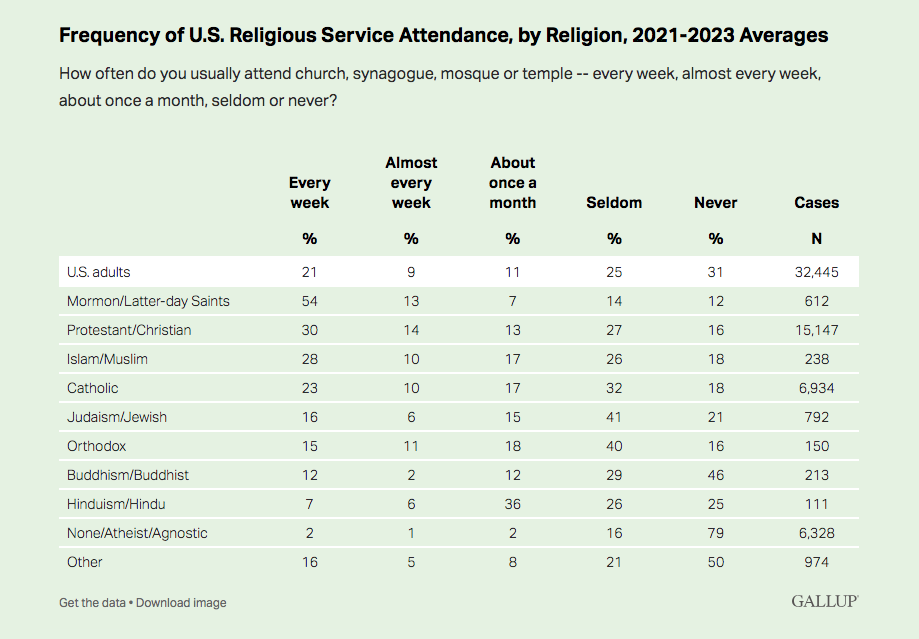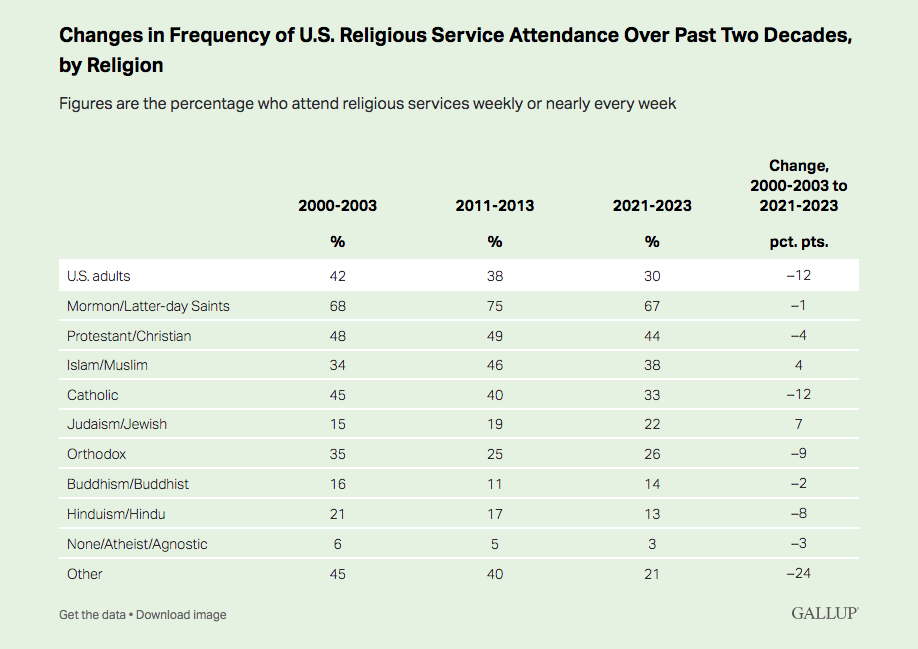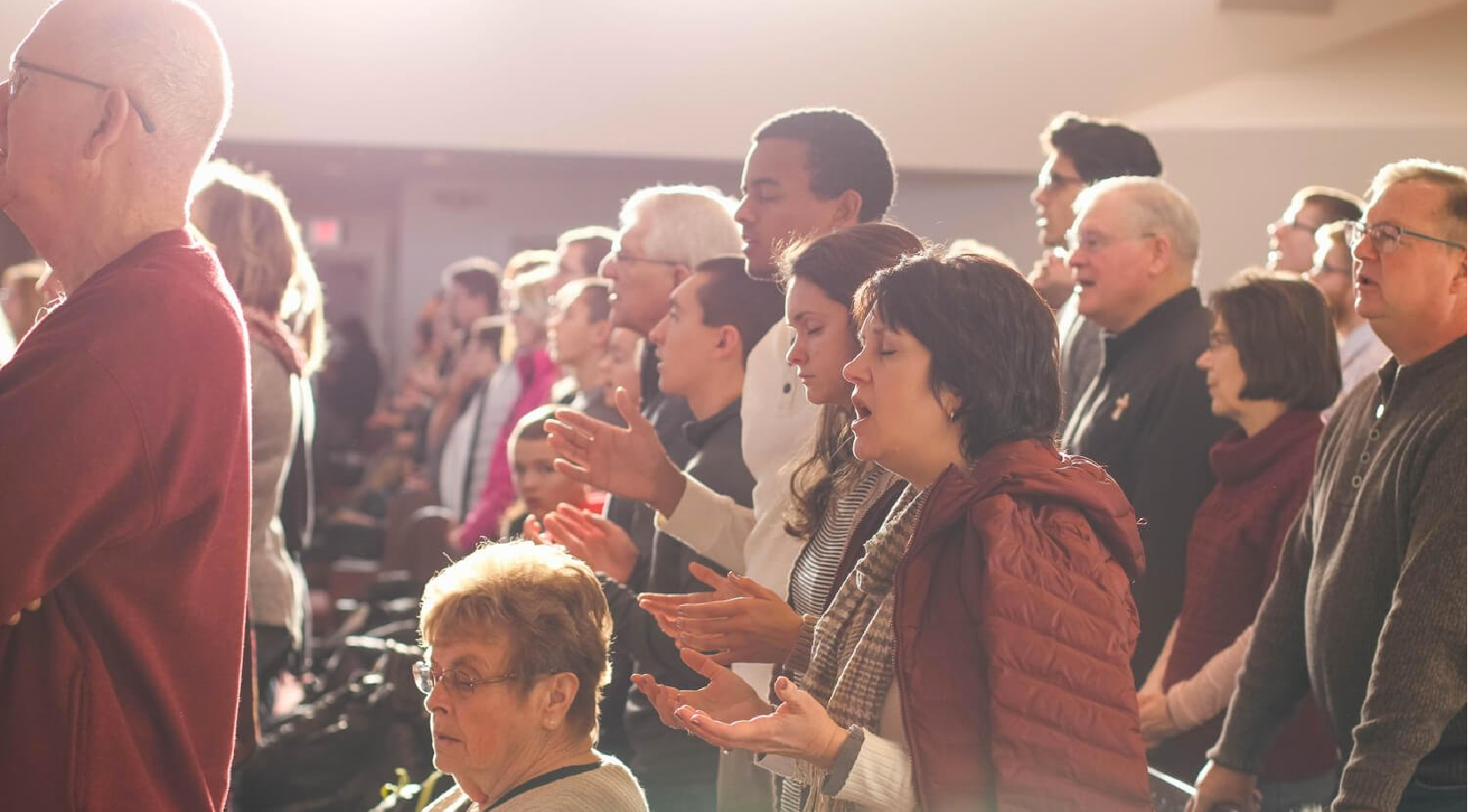(ZENIT News / Washington, DC, 03.04.2024).- The dynamics of religion in the United States has undergone a notable change over the last decades, as Gallup’s data reveals, compiled in its extensive research on religious attendance in the country. This data, gathered over years of exhaustive surveys, gives a clear vision of the tendencies in religious practice and affiliation in the country.
According to the most recent findings, around 30% of American adults regularly attend religious services, marking a gradual decrease over the last two decades, when this percentage was considerably higher. This drop in regular religious attendance is a phenomenon that has been increasing, reflecting social and cultural changes in American society.

Breaking down this data by religious groups, an interesting panorama emerges: Mormons, known officially as the Church of Jesus Christ of Latter-Day Saints, head the list as the group most committed to regular attendance of religious services. An impressive two-thirds of Mormons report that they attend church weekly or almost weekly, which reflects a high level of observance within this community.
Protestants are in second place, including a variety of Christian denominations. Approximately 44% of Protestants regularly attend religious services, which demonstrates a solid base of attendance within this diverse religious group.
Muslims and Catholics are in the third and fourth place respectively, in terms of regular attendance of religious services. Around 38% of Muslims and 33% of Catholics report that they attend services regularly, which indicates a significant commitment to religious practice in these communities.
However, among the smallest religious groups, such as Jews, Orthodox, Buddhists and Hindus, regular attendance of religious services is considerably lower. Less than 30% of these groups report regular attendance of religious services, the majority stating that they rarely or never attend.

It’s important to point out that the data shows a downward trend in regular attendance of religious services in almost all religions. This decline has been especially pronounced among Catholics, with a drop of 45% to 33% in regular attendance over the last two decades. Jews, Orthodox, Buddhists and other religious groups have also experienced a decrease in regular attendance of religious services over this period.
Despite these general downward trends, there are some exceptions. For instance, adult Muslims and Jews showed a slight increases in attendance of religious services over the last two decades. This increase could reflect a renewed interest in religious practice within these communities.
In conclusion, the data compiled by Gallup gives a detailed vision of the evolution of religious attendance in the United States. Although religious practice continues being important for a significant part of the population, the tendencies indicate a general decrease in regular attendance of religious services in the country. The data is essential to understand the religious panorama in constant change in the United States and its implications for the future.
Thank you for reading our content. If you would like to receive ZENIT’s daily e-mail news, you can subscribe for free through this link.



